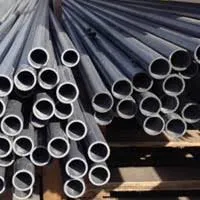
-
 Afrikaans
Afrikaans -
 Albanian
Albanian -
 Amharic
Amharic -
 Arabic
Arabic -
 Armenian
Armenian -
 Azerbaijani
Azerbaijani -
 Basque
Basque -
 Belarusian
Belarusian -
 Bengali
Bengali -
 Bosnian
Bosnian -
 Bulgarian
Bulgarian -
 Catalan
Catalan -
 Cebuano
Cebuano -
 China
China -
 China (Taiwan)
China (Taiwan) -
 Corsican
Corsican -
 Croatian
Croatian -
 Czech
Czech -
 Danish
Danish -
 Dutch
Dutch -
 English
English -
 Esperanto
Esperanto -
 Estonian
Estonian -
 Finnish
Finnish -
 French
French -
 Frisian
Frisian -
 Galician
Galician -
 Georgian
Georgian -
 German
German -
 Greek
Greek -
 Gujarati
Gujarati -
 Haitian Creole
Haitian Creole -
 hausa
hausa -
 hawaiian
hawaiian -
 Hebrew
Hebrew -
 Hindi
Hindi -
 Miao
Miao -
 Hungarian
Hungarian -
 Icelandic
Icelandic -
 igbo
igbo -
 Indonesian
Indonesian -
 irish
irish -
 Italian
Italian -
 Japanese
Japanese -
 Javanese
Javanese -
 Kannada
Kannada -
 kazakh
kazakh -
 Khmer
Khmer -
 Rwandese
Rwandese -
 Korean
Korean -
 Kurdish
Kurdish -
 Kyrgyz
Kyrgyz -
 Lao
Lao -
 Latin
Latin -
 Latvian
Latvian -
 Lithuanian
Lithuanian -
 Luxembourgish
Luxembourgish -
 Macedonian
Macedonian -
 Malgashi
Malgashi -
 Malay
Malay -
 Malayalam
Malayalam -
 Maltese
Maltese -
 Maori
Maori -
 Marathi
Marathi -
 Mongolian
Mongolian -
 Myanmar
Myanmar -
 Nepali
Nepali -
 Norwegian
Norwegian -
 Norwegian
Norwegian -
 Occitan
Occitan -
 Pashto
Pashto -
 Persian
Persian -
 Polish
Polish -
 Portuguese
Portuguese -
 Punjabi
Punjabi -
 Romanian
Romanian -
 Russian
Russian -
 Samoan
Samoan -
 Scottish Gaelic
Scottish Gaelic -
 Serbian
Serbian -
 Sesotho
Sesotho -
 Shona
Shona -
 Sindhi
Sindhi -
 Sinhala
Sinhala -
 Slovak
Slovak -
 Slovenian
Slovenian -
 Somali
Somali -
 Spanish
Spanish -
 Sundanese
Sundanese -
 Swahili
Swahili -
 Swedish
Swedish -
 Tagalog
Tagalog -
 Tajik
Tajik -
 Tamil
Tamil -
 Tatar
Tatar -
 Telugu
Telugu -
 Thai
Thai -
 Turkish
Turkish -
 Turkmen
Turkmen -
 Ukrainian
Ukrainian -
 Urdu
Urdu -
 Uighur
Uighur -
 Uzbek
Uzbek -
 Vietnamese
Vietnamese -
 Welsh
Welsh -
 Bantu
Bantu -
 Yiddish
Yiddish -
 Yoruba
Yoruba -
 Zulu
Zulu
frp food grade equipment
Understanding the Importance of FRP Food Grade Equipment
In today's rapidly advancing industrial landscape, the significance of choosing the right materials for food processing equipment cannot be overstated. Among various materials available for fabricating food-grade equipment, Fiber Reinforced Plastic (FRP) stands out due to its unique properties and advantages. This article explores the importance of FRP food grade equipment, its benefits, and its growing application in the food industry.
FRP is a composite material made from a polymer matrix reinforced with fibers, typically glass or carbon. The combination of these materials results in a product that boasts impressive strength, lightweight features, and enhanced durability. These characteristics make FRP an ideal choice for food-grade applications, where equipment must meet strict health and safety standards.
Understanding the Importance of FRP Food Grade Equipment
Another significant benefit of FRP is its lightweight nature. This property simplifies installation and maintenance processes, as operators can easily move and handle the equipment without the need for heavy machinery. The ease of handling also translates to reduced labor costs and improved operational efficiency, enabling businesses to focus on production rather than equipment management.
frp food grade equipment

Furthermore, FRP can be manufactured in various shapes and sizes, allowing for customization to meet specific operational needs. Whether it's tanks, pipes, or processing vessels, FRP can be tailored to fit into existing systems or designed for new applications. This versatility opens up avenues for innovative designs and advanced food processing solutions, enhancing production capabilities.
The non-porous surface of FRP is another crucial feature that contributes to its suitability for food-grade applications. This characteristic prevents bacteria and contaminants from being absorbed into the material, making cleaning easier and more effective. Additionally, many FRP materials can be produced with antimicrobial properties, further ensuring that food safety is maintained throughout the processing chain.
In an era where consumer awareness about food quality and safety is at an all-time high, investing in FRP food grade equipment is a proactive measure for businesses aiming to comply with regulations and enhance their reputation. Companies utilizing FRP are better positioned to ensure the safety of their products, thereby building trust with consumers and stakeholders.
Moreover, the sustainability aspect of FRP cannot be overlooked. As businesses look to minimize their environmental footprint, FRP's long lifespan means reduced waste compared to traditional materials that may require frequent replacement. Additionally, many FRP products are recyclable, further contributing to a sustainable manufacturing approach.
In conclusion, the application of FRP food grade equipment in the food industry is an increasingly vital consideration for businesses focused on safety, efficiency, and sustainability. Its corrosion resistance, lightweight nature, customization possibilities, non-porous surface, and eco-friendliness make FRP a superior choice for food processing applications. As the industry continues to evolve, the adoption of innovative materials like FRP will play a crucial role in shaping the future of food safety compliance and operational excellence.









